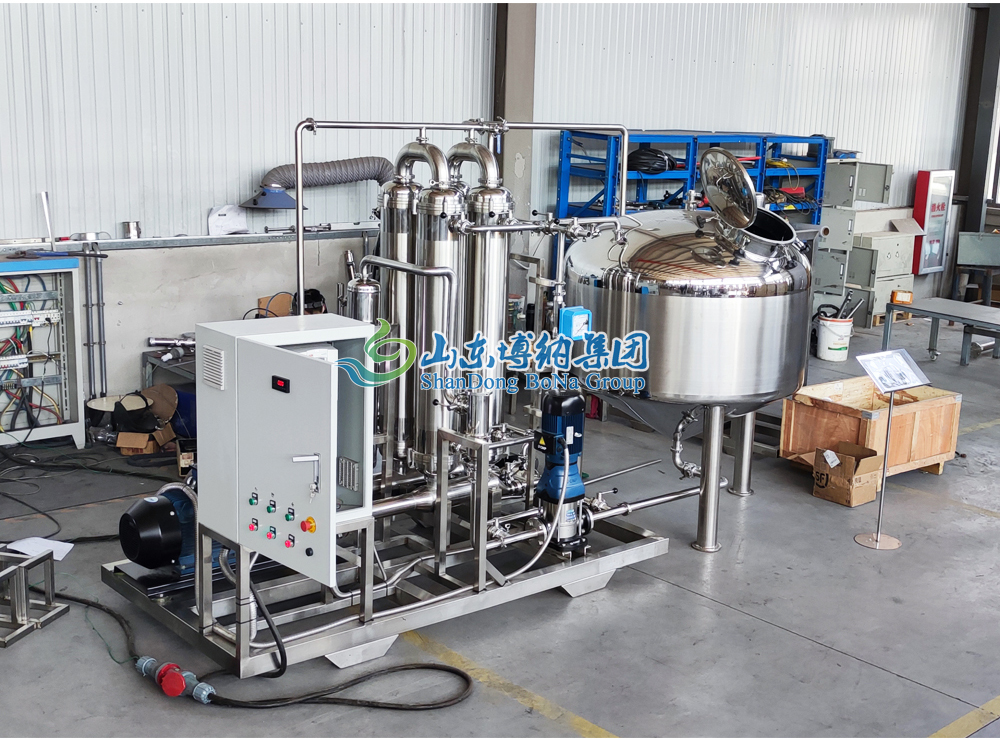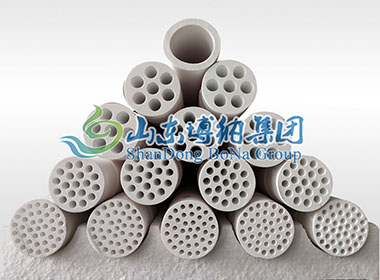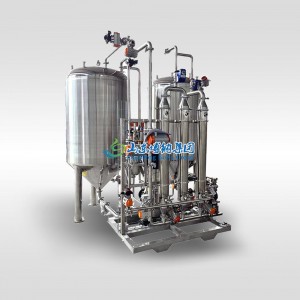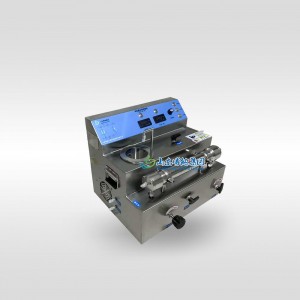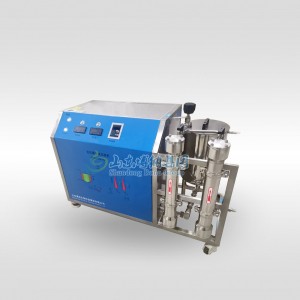Ceramic Membrane Microfiltration and Ultrafiltration Tangential Flow Filtration System
|
No |
Item |
Data |
|
1 |
Product Name |
Ceramic Membrane TFF Filtration System |
|
2 |
Model No. |
BNCM19-4-SA |
|
3 |
Filtration Precision |
MF/UF |
|
4 |
Filtration Rate |
1000-1500L/H |
|
5 |
Minimum Circulating Volume |
112L |
|
6 |
Feed Tank |
Customized |
|
7 |
Design Pressure |
0.6Mpa |
|
8 |
Working Pressure |
0-0.6MPa |
|
9 |
PH Range |
0-14 |
|
10 |
Working Temperature |
5-80℃ |
|
11 |
Cleaning Temperature |
5-80℃ |
|
12 |
Total Power |
21KW Or Customized |
Application Example:
Processing Cell Lysate with Tangential Flow Filtration
Since the introduction of genetic engineering on a practical scale in the 1970′s, there has been increased interest in the production of biological products using large scale fermentation. Both new products that had not been commercially available previously in sufficient quantities, and old products whose production costs are now potentially cheaper have been in the spotlight. One of the difficulties that is encountered with some types of recombinantly derived proteins, however, is the purification steps. Because E. coli does not secrete recombinant proteins into the growth media, the cells must be lysed which increases the difficulty of separating the desired protein from all other biological constituents. Purification of a protein from a lysate requires a number of steps to first eliminate cell fragments and debris from soluble material and to then separate the desired protein from other soluble components. Techniques that have been classically used in lysate processing and protein isolation include: centrifugation, open column chromatography and precipitation. Tangential flow filtration can now be added to the list.
Tangential flow filtration has been most extensively used for concentrating cells concentrating and washing proteins and removing pyrogens from solutions. By passing the process solution tangential or parallel to the filter, and recirculating this fluid back to the original container, it is possible to filter solutions that would normally clog a dead ended filtration system. Also, with filtration, it is possible to perform gross fractionations based on size. These two factors make it feasible to process cell lysates with membrane filters in order to separate cell debris from proteins, and to also concentrate the crude fraction prior to the next purification step. Filtration offers advantages over other techniques in that relatively little energy is needed compared to centrifugation, and the filtration system is closed and will not produce aerosols. Also, the equipment can be scaled up to handle large quantities.
The purpose of this work is several fold. First, we wanted to determine the magnitude of filtration rates that are possible with lysates compared to whole cells, and to identify those operational parameters tha t influenc e membrane flux. Second, an effort was made to investigate how severa ldifferent methods of generating a lysate suspension would affec t membrane processing , if at all. Third, we wanted to investigate the quantitatively recovery of a specific protein from a lysate with filtration, and last, an effort was made to determine what operational parameters are most important in maximizing the flow of protein through the filter? In short, this work was designed as the first step in documenting the performance of membrane systems for processing lysates.
Lysate processing with membrane filters is not limited to lab applications as Quirk and Woodrow processed gram and kilogram scale quantities of Pseudomonas sp. for the purpose of isolating enzymes. Compared to centrifugation procedures, the filtration system gave significantly higher specific activities (0.85 vs 0.2) for the enzyme arylamidase. For carboxypeptidase, upwards of 85% activity was recovered from the original lysate and the filtration system was bette r i n terms of tota l yiel d and process time needed compared to centrifugation . These authors concluded that tangential flow filtration possessed a number of advantages, and that filtration was a practical alternative to centrifugation.






